3 game-changing technologies from the 2016 Detroit Auto Show
See also: The worst things from the 2016 Detroit Auto Show
Check out three game changers below.
Game-changing tech No. 1: Brembo Brake-by-Wire
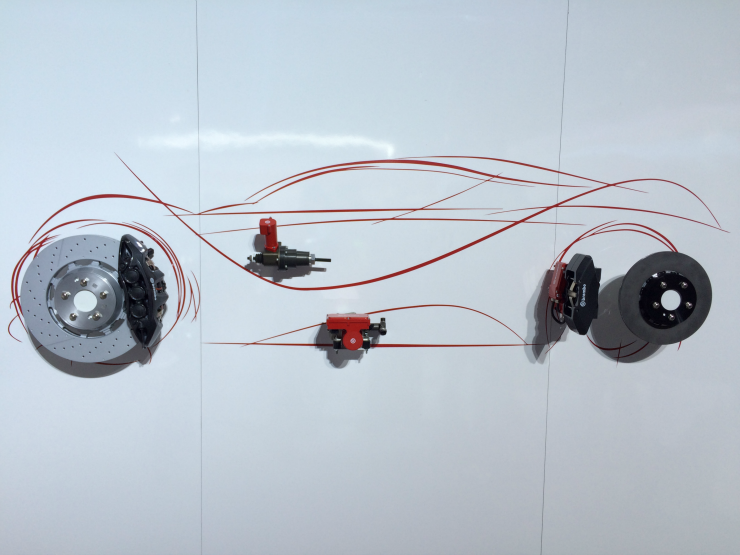
The name Brembo has become synonymous with high-performance, cutting-edge braking technologies. The brand is famous for taking technology it developed in the ultra-high performance crucible of Formula 1 racing and adapting it for use in performance street cars, from Ferraris and Lamborghinis to more pedestrian Mustangs and Camaros. The quality of Brembo braking systems has become so highly regarded that it is considered fashionable to have Brembo calipers peeking through from behind the spokes.
Now, Brembo is using Formula 1 to develop a new revolutionary braking method that minimizes the use of (or even replaces) traditional hydraulics with electrical wires and computers, improving braking times, reducing weight and even helping increase gas-mileage. This system is referred to as brake-by-wire.
See also: Best concept cars from the 2016 Detroit Auto Show
Essentially, a brake-by-wire system works by using an electro-mechanical brake pedal sensor that communicates with an central electronic control unit (ECU). The ECU then communicates almost instantaneously with four braking control units, or BCUs, located at each wheel.
For the front wheels, an electric pump and motor feeds the brakes with hydraulic pressure. Rear brakes are powered exclusively by a fully electric motor, which double as a parking break. On smaller economy cars, the front brakes could potentially be exclusively electric.
Brembo says that the current brake-by-wire system reduces the time between when you put your foot on the brakes and when the brakes are fully applied from 300 milliseconds to 90 milliseconds, a significant reduction.
Plus, brake-by-wire technology is ready to go for autonomous driving, and it integrates seamlessly with driver assistance packages like automatic braking. It also improves fuel consumption by completely eliminating caliper drag. Finally, the system allows much greater flexibility in terms of layout, allowing for more flexibility in overall vehicle design.
While this technology has yet to be applied in any road car now available, the Brembo prototype system has logged more than 300,000 miles of use in a sports car, and has been successfully implemented in the 2014 and 2015 Formula One season. Expect this technology to start with high-end sports cars before trickling down into more common vehicles.
Game-changing tech No. 2: Toyota/Kymeta Research Vehicle
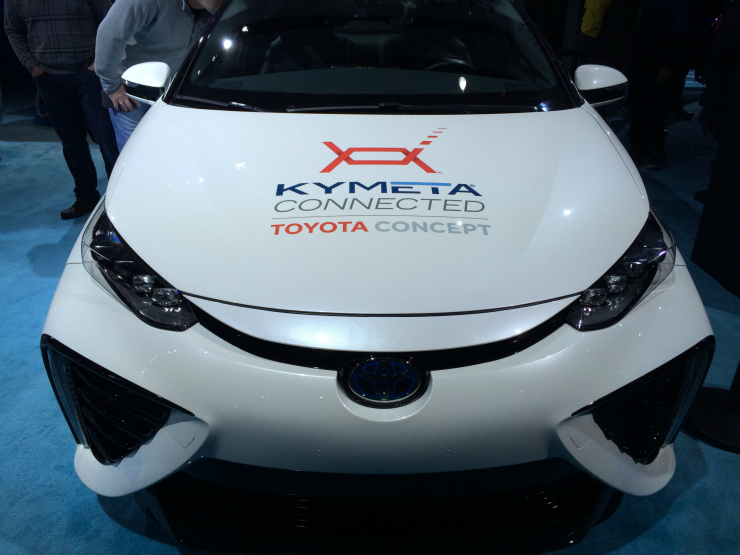
Toyota and Kymeta displayed the future of how your car connects with the world with their Mirai-based Research Vehicle. The technology in this car uses a flat panel antenna on the roof to communicate with satellites instead of a dish antenna, allowing for seamless integration into a car.
This set up allows the car to receive more data more securely than it would be able to through radio or 4G/LTE. This means that the driver can receive more accurate information for navigation and real-time weather updates, and passengers can have entire movies streamed to screens in the back.
While flat panel satellite antennas are still a long way away, this shows a conclusive first step toward the next generation of data reception in cars.
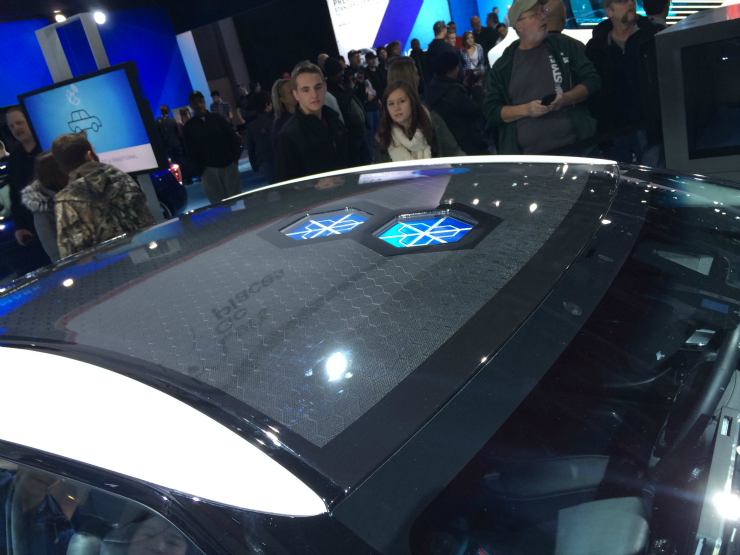
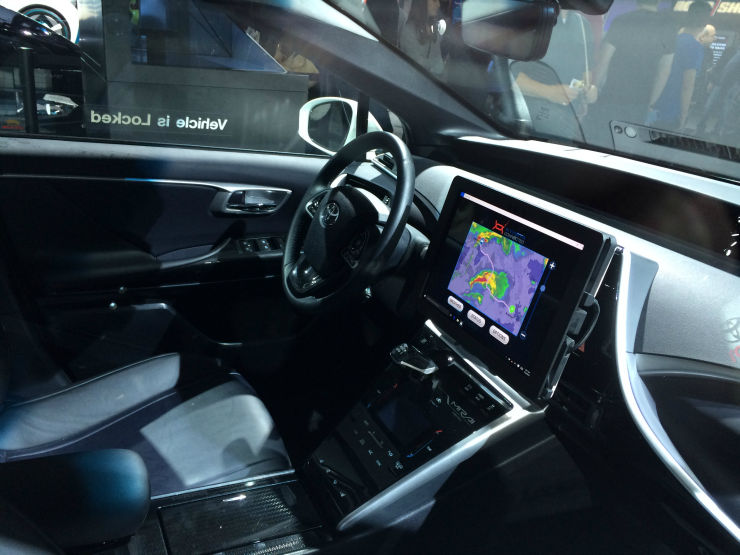
Game-changing tech No. 3: Volkswagen Golf R-Touch
The way you interact with your car’s infotainment and climate control has changed drastically in the past 15 years, with a large shift away from physical buttons and knobs to touchscreens. At the 2016 Detroit Auto Show, Volkswagen displayed and demonstrated a brand-new way of controlling your car’s functions.
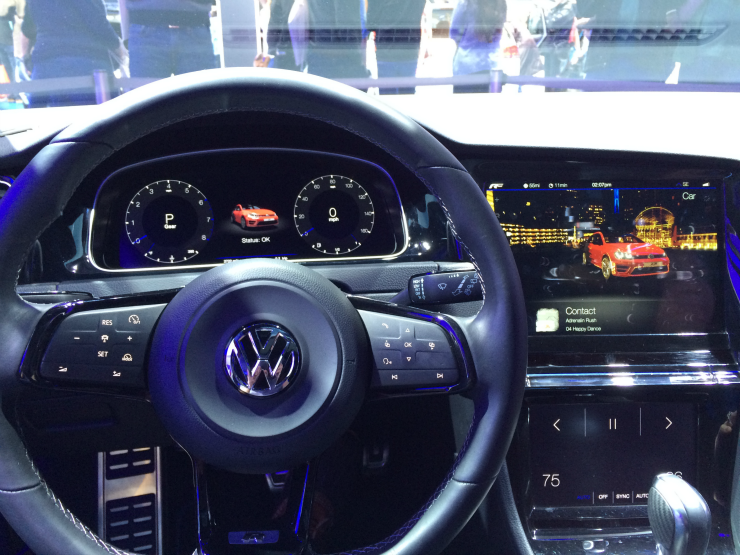
Sitting in the driver’s seat, the first thing you notice is the big center screen. The large, easy-to-read menu allows you to choose between functions such as car settings and status, navigation or music. Under the Car menu, a detailed, animated 3-D model of the Golf R-Touch is shown that displays the status of the vehicle. When you open your door or turn on your lights, the animated car on your screen will follow suit.
When you touch the screen, you can rotate and interact with the car by touching certain parts of the car, such as the tires to check tire pressure. The navigation screen no longer shows you just a map, but rather a 3-D display of buildings and features that are around you. The music screen implements gesture controls, allowing you to change songs with just the wave of a hand.
See also: Our 5 favorite new cars and trucks from the 2016 Detroit Auto Show
Below the infotainment screen, a slider allows you to adjust the volume of your music, the navigation or telephone volume depending on how many fingers you use. It can also be used to select a color for the ambient lighting of the car. This is the only real physical control on the entire dashboard.
Under the slider, another screen for climate and system control center features haptic feedback. As you move your hand across the screen, it feels like there are physical buttons, and when you push something, you feel a satisfying click.
Functions like opening the the sunroof or turning on the lights have been relegated to gesture controls as well. Except for controls on the steering wheel, not an ounce of analog remains in the car. The features demonstrated fully incorporate the car and feel polished.
It would probably take a few weeks of ownership to discover every function and customizable feature of the system, but once learned, it’s intuitive. Volkswagen says this is the future of their automotive interior. It definitely feels like a giant step forward.
About the writer: Will Kinton thinks life is too short to drive boring cars, and enjoys sharing his passion for them. For more, follow him on Twitter:@willkinton247.
See also: Apple CarPlay: A smarter brain for your car
